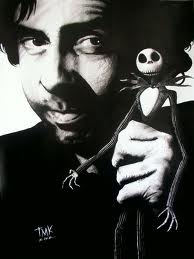The Beauty of Long Division
 Remember long division? You have a big number and want to divide it by a small number. You draw a little house, put the big number in it, and the small number outside it. Then you start guessing. Roughly how many times will the small number go into the large number?
Remember long division? You have a big number and want to divide it by a small number. You draw a little house, put the big number in it, and the small number outside it. Then you start guessing. Roughly how many times will the small number go into the large number?
You’ll be wrong the first time but it doesn’t matter. You start refining. If your first guess is close, you can refine it in a few steps. If your first guess is way off, you’ll need to take more refining steps. Either way, the method works. In fact, it’s pretty much foolproof. Even fourth graders can do it.
I got this example from an elegant little book I’m reading called Intuition Pumps and Other Tools for Thinking by the philosopher, Daniel Dennett. The general idea is that thinkers, like blacksmiths, have to make their own tools. We’ve used some tools for millennia; others are of more recent vintage.
As long division illustrates, one tool is approximation. (Technically, it’s known as heuristics). In the real world, we don’t always have to be precise. We start with a guess and then refine it. The important thing is to make the guess. That’s the ante for getting into the game.
It’s surprising how often this works. In fact, now that I’m thinking about it, I realize that I make guesses all the time. Guessing is certainly a good management tool. In the hurly burly of commerce, it’s not always clear precisely what’s happening. It usually takes accountants four to six weeks to figure out precisely what happened in a given quarter. In the meantime, it’s useful for day-to-day managers to make educated guesses. Learning to make such guesses is a critical skill.
I realized that I also apply this to my writing. I sometimes get writer’s block. I know the argument I want to make but I don’t know how to frame it. I can’t get started. When that happens, I make an effort to just write something, even if it’s sloppy and poorly phrased. Once I have something written down, I can then shift gears. I’m no longer writing; I’m editing. Somehow, that seems much easier.
As you think about thinking, think about guessing. In many cases, you’re more likely to get to a clear thought through approximation than through a brilliant flash of insight.
Thinking and Health
 Does the mind influence the body or vice-versa? It seems that it happens both ways and the vagus nerve plays a key role in keeping you both happy and healthy (and creative).
Does the mind influence the body or vice-versa? It seems that it happens both ways and the vagus nerve plays a key role in keeping you both happy and healthy (and creative).
Also known as the tenth cranial nerve, the vagus nerve links the brain with the lungs, digestive system, and heart. Among many other things, the vagus nerve sends the signals that help you calm down after you’ve been startled or frightened. It helps you return to a “normal” state. A healthy vagus nerve promotes resilience — the ability to recover from stress. (The vagus nerve is not in the spinal cord, meaning that people with spinal cord injuries can still sense much of their system).
The vagus also helps control your heartbeat. To use oxygen efficiently, your heart should beat a bit faster when you breathe in and a bit slower when you breathe out. The ratio of your breathing-in heartbeat to your breathing-out heartbeat is known as the vagal tone.
Physiologists have long known that a higher vagal tone is generally associated with better physical and mental health. Most researchers assumed, however, that we can’t improve our vagal tone. Some lucky people have a higher vagal tone; some unlucky people have a lower one. It’s determined by factors beyond our control.
Then Barbara Fredrickson and Bethany Kok decided to see if that was really true. Their research – published in Psychological Science – suggests that we can improve our vagal tone. By doing so, we can create a virtuous circle: improving our mental outlook can improve vagal tone which, in turn, can make it easier to improve our mental outlook. (For two non-technical articles on this research, click here and here).
In their experiment, Fredrickson and Kok randomly divided volunteers into two groups. One group was taught a form of meditation (loving kindness meditation) that engenders “feelings of goodwill”. Both groups were also asked to keep track of their positive and negative emotions.
The results were fairly straightforward: “All the volunteers … showed an increase in positive emotions and feelings of social connectedness – and the more pronounced this effect, the more their vagal tone had increased ….” Additionally, those who meditated improved their vagal tone much more than those who didn’t.
The virtuous circle seems to be associated with social connectedness, which Fredrickson refers to as a “potent wellness behavior”. The loving kindness meditation promotes a sense of social connectedness. That, in turn, improves vagal tone. That, in turn, promotes a sense of social connectedness. Bottom line: it pays to think positive thoughts about yourself and others.
Critical Thinking Standards

It’s clear but is it accurate?
I teach a course in critical thinking and friends sometimes ask, “Well, what does that mean?” Essentially, it’s a process of thinking about thinking in a structured, systematic way. The goal is to think more clearly and fairmindedly.
It’s also about epistemology: how do we know what we know? More specifically, how do we know that what we know is true?
It’s generally agreed, for instance, that there are eight “intellectual standards” that can help us think more clearly. Each is important in its own right but the order is also important. Here they are:
Clarity – this is the most basic standard; it’s a gateway to other standards. If a statement is not clear, we can’t reason effectively. The question, “What can be done about the crisis in the family?” is unclear. Useful clarifying questions include, Can you give me an example?, How do you define the problem?
Accuracy – a statement can be clear but not accurate: “Travis is a genius.” Advertisers and politicians frequently make statements that are clear but not accurate. At the same time, our own thoughts may not be accurate. So, we need external reference points that can help us validate accuracy. For instance, a friend publishes the website Thinking Arizona, which provides “facts to inform the public discourse”. That seems like a growth market.
Precision – a statement can be clear and accurate but not precise: “Travis is overweight.” Well, how much overweight? Is this a small problem or a big problem? Key question: can you be more specific?
Relevance — a statement can be clear, accurate, and precise but not relevant. I once explained to my boss just how hard I was working on a particular project. Her response was, “So what?” It really wasn’t relevant.
Depth – a statement can be clear, accurate, precise and relevant but shallow. Here’s one: “If we just eliminated sex ed in high schools, teens wouldn’t get pregnant.” Well, maybe … but somehow teen pregnancy seems to be a much deeper, more complicated issue. Key question: Is that really the most significant factor?
Breadth — a statement can be clear, accurate, precise, relevant and deep but too narrow. Politicians do this regularly, presenting only the conservative or only the liberal point of view. At the same time, we may be narrow in our own thinking. So we may need to broaden our own thinking as well as “their” thinking. Key questions: What about the other side? What if we flip the question around?
Logic – a statement may be all of the above but not logical – it just doesn’t make sense. The coin toss experiment that proves that criticism is more effective than praise is a good example. Key questions: How does that conclusion flow from the evidence? Are other factors involved?
Significance – a statement may be all of the above but not significant. This is a little different than relevance. You may find that multiple factors are relevant but only one or two are significant. For instance, lung cancer may have multiple causes (all of which are relevant) but smoking is probably the cause that is most significant.
All of this may seem like “structured common sense” and in a way it is. But it’s useful to review these standards occasionally to remember how they fit together. I also like to review the questions from time to time so they’re on the tip of my tongue when I get into an argument.
Note: Most books on critical thinking would present some variation of this material. I adapted this version from Critical Thinking, 3rd edition, by Richard Paul and Linda Elder.
Critical Thinking and the Job Market

Because I know how to think.
I used to teach research methods, which is about creating knowledge. Now I teach critical thinking, which is about assessing knowledge. How do we know what we know and how can we assess knowledge in an objective, fairminded way?
It’s a fun course because we think about thinking. We discuss everything from egocentrism to reason, logic, ethics, media bias, and unfair ways to win an argument. Many of the students challenge their own beliefs and we all challenge each other. It’s a stimulating way to learn to think clearly and to avoid getting bamboozled.
What surprises me about the class is how surprised the students are. Even though much of the course is applied common sense, they’ve rarely thought of this before. That concerns me because these are Master’s students. All of them have at least four years of undergraduate study. Yet they haven’t thought about how to think. Here are some quotes from recent student papers:
I never thought to think about thinking
It is revolutionary for me to understand that there is an analytical process called critical thinking that I can [use] to systematically develop clearer thinking…
… while I practiced some critical thinking basics, I had really only scratched the surface
This class taught me that I was unconscious of the connection between my thoughts and emotions.
It was not required in my undergraduate program and I have never taken a class similar to it.
So, I’ve been asking myself, why aren’t we teaching college students how to think? My Mom always told me that the purpose of college was to learn how to think. Was she wrong or have we given up on that objective?
When I was in undergraduate school, the first two years of our four-year curriculum were given over to “general education”. We didn’t start to specialize in our major – finance or engineering or anthropology – until the third year. Today, it seems that general education has simply evaporated. Students start specializing as soon as they land on campus.
So when do they learn to think? If a finance major takes four years of accounting courses, what do they really gain, other than an exceedingly narrow view of the world? I wonder if we haven’t gone too far in the direction of preparing students for the job market. We identify the technical skills the market requires – accounting, programming, etc. – but not the thinking skills.
Do companies really want ace spreadsheet jockeys who don’t know how to evaluate whether an assumption is logical or not? As someone who hired several hundred people in my career, I would say no. I preferred hiring people who can think clearly and communicate effectively. The rest is trivial.
So, I’m all in favor of bringing back general education and teaching students how to think. I’m not sure how to go about it but I’m developing a theory that the MOOCs will help get us back to basics. That may be the silver lining in the coming wave of MOOC disruption.
A Joke About Your Mind’s Eye
Here’s a cute little joke:
The receptionist at the doctor’s office goes running down the hallway and says, “Doctor, Doctor, there’s an invisible man in the waiting room.” The Doctor considers this information for a moment, pauses, and then says, “Tell him I can’t see him”.
It’s a cute play on a situation we’ve all faced at one time or another. We need to see a doctor but we don’t have an appointment and the doc just has no time to see us. We know how it feels. That’s part of the reason the joke is funny.
Now let’s talk about the movie playing in your head. Whenever we hear or read a story, we create a little movie in our heads to illustrate it. This is one of the reasons I like to read novels — I get to invent the pictures. I “know” what the scene should look like. When I read a line of dialogue, I imagine how the character would “sell” the line. The novel’s descriptions stimulate my internal movie-making machinery. (I often wonder what the interior movies of movie directors look like. Do Tim Burton’s internal movies look like his external movies? Wow.)
We create our internal movies without much thought. They’re good examples of our System 1 at work. The pictures arise based on our experiences and habits. We don’t inspect them for accuracy — that would be a System 2 task. (For more on our two thinking systems, click here). Though we don’t think much about the pictures, we may take action on them. If our pictures are inaccurate, our decisions are likely to be erroneous. Our internal movies could get us in trouble.
Consider the joke … and be honest. In the movie in your head, did you see the receptionist as a woman and the doctor as a man? Now go back and re-read the joke. I was careful not to give any gender clues. If you saw the receptionist as a woman and the doctor as a man (or vice-versa), it’s because of what you believe, not because of what I said. You’re reading into the situation and your interpretation may just be erroneous. Yet again, your System 1 is leading you astray.
What does this have to do with business? I’m convinced that many of our disagreements and misunderstandings in the business world stem from our pictures. Your pictures are different from mine. Diversity in an organization promotes innovation. But it also promotes what we might call “differential picture syndrome”.
So what to do? Simple. Ask people about the pictures in their heads. When you hear the term strategic reorganization, what pictures do you see in your mind’s eye? When you hear team-building exercise, what movie plays in your head? It’s a fairly simple and effective way to understand our conceptual differences and find common definitions for the terms we use. It’s simple. Just go to the movies together.
